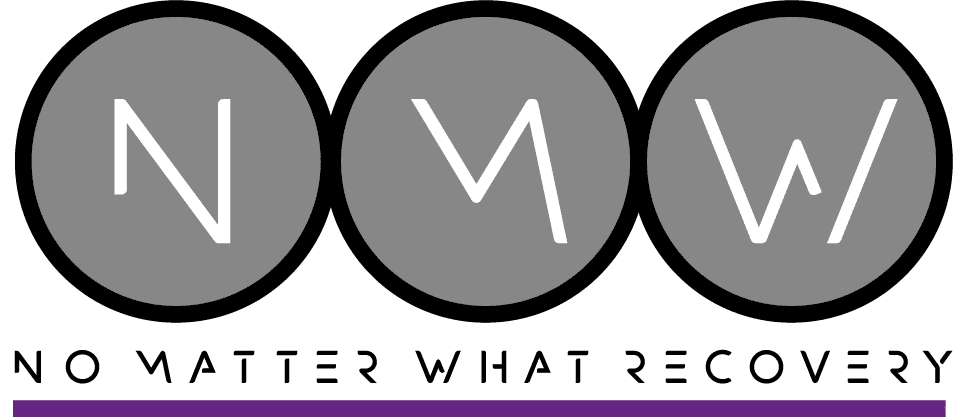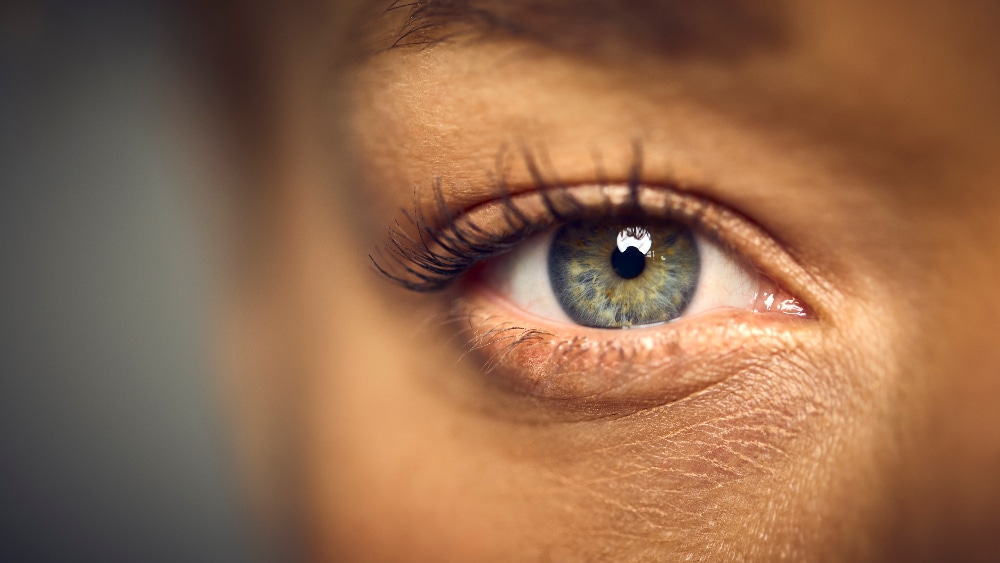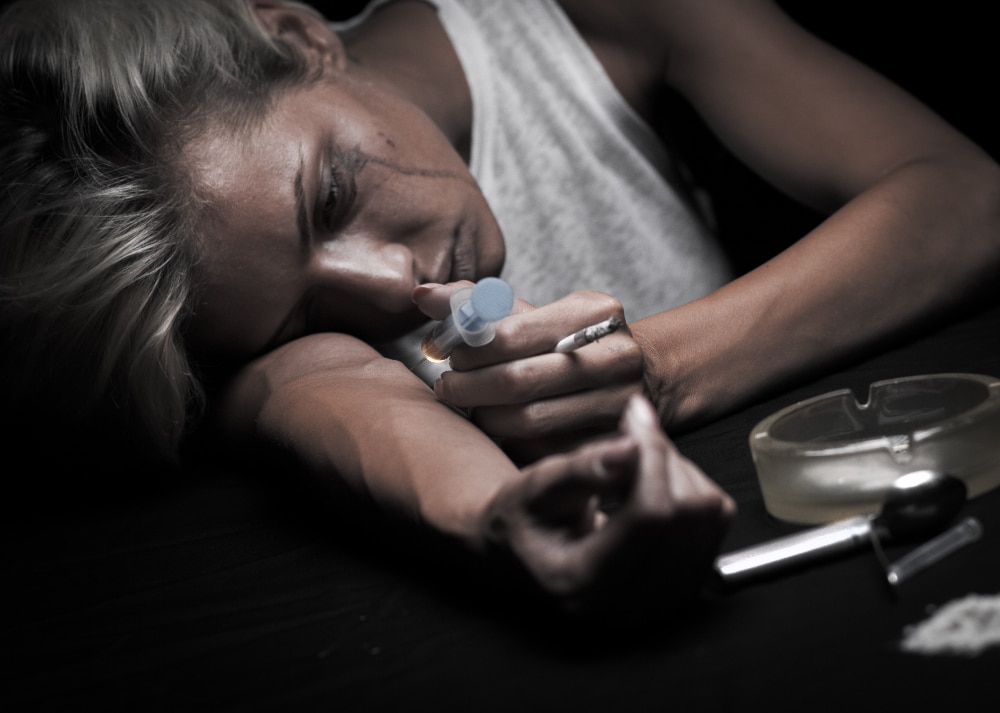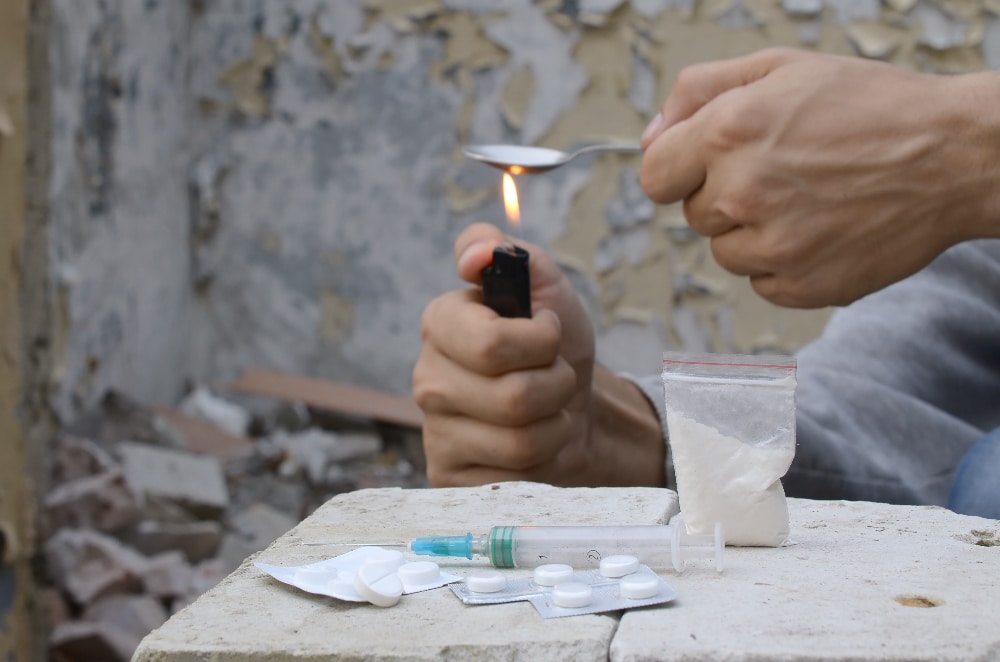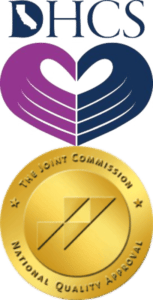Medically Reviewed by: Eric Chaghouri
Heroin use is a severe and pervasive issue affecting individuals and communities worldwide. In fact, a to the 2014 National Survey on Drug Use and Health, an estimated 435,000 people in the United States – 0.14% of the population aged 12 years and older inject, smoke, or snort heroin regularly.
The opioid crisis has brought this problem to the forefront, highlighting the need for greater awareness and intervention. One of the most telltale signs of heroin abuse is what is commonly known as “heroin eyes.” Recognizing these physical signs can be crucial for early intervention and support. By understanding the symptoms and effects of heroin eyes, we can better support those struggling with addiction and encourage them to seek the help they need.
What Are Heroin Eyes?
Heroin eyes refer to the distinct changes in the eyes of individuals who use heroin. These changes are often the first visible signs of heroin use and can include:
- Pinpoint Pupils: One of the most notable signs is that heroin causes the pupils to become extremely constricted, appearing as tiny dots even in low-light conditions.
- Bloodshot Eyes: The whites of the eyes can become red and irritated due to the dilation of blood vessels.
- Droopy Eyelids: Heroin induces a state of relaxation that can cause the eyelids to appear half-open or droopy, giving a drowsy or “nodding off” appearance.
These changes occur because heroin impacts the nervous system, affecting muscle control and blood flow in the eyes.
The Science Behind Heroin Eyes
Heroin, an opioid, affects the central nervous system by binding to opioid receptors in the brain. This interaction leads to several physiological changes, including:
- Pupil Constriction: Heroin activates the parasympathetic nervous system, causing the pupils to contract significantly. This is a direct result of the drug’s effect on the brain’s receptors, which control muscle movements in the eyes.
- Blood Vessel Dilation: The drug’s effects can lead to increased blood flow to the eyes, resulting in redness and irritation. The dilation of blood vessels in the eyes is a response to the overall relaxation and blood flow changes induced by heroin.
- Muscle Relaxation: Heroin induces a state of relaxation, causing the eyelids and other facial muscles to droop. This relaxation extends to the muscles controlling the eyelids, leading to the characteristic droopy appearance.
Symptoms and Signs
Immediate Signs After Use
Immediately after using heroin, several signs can become apparent:
- Pinpoint Pupils: One of the most immediate and noticeable signs, pinpoint pupils indicate opioid use. Even in dim light, the pupils remain constricted.
- Bloodshot Eyes: Shortly after heroin use, the eyes may appear bloodshot due to the dilation of blood vessels.
- Droopy Eyelids: The user may have difficulty keeping their eyes fully open, often appearing sleepy or sedated.
Long-term Effects
Chronic heroin use can lead to more persistent and damaging effects:
- Persistent Redness: Continuous use can cause ongoing irritation and redness in the eyes, even when the individual is not currently under the influence of the drug.
- Damage to Vision: Over time, heroin use can lead to significant visual impairments, including blurred vision and difficulty focusing.
- Infections and Eye Diseases: Prolonged use and the potential for poor hygiene practices can increase the risk of infections and other eye-related health issues.
Differentiating Heroin Eyes from Other Conditions
Compared with Other Drug Effects
It’s important to distinguish heroin eyes from the effects of other substances:
- Cocaine and Methamphetamine: These stimulants typically cause pupil dilation, making the eyes appear larger. In contrast, heroin causes pupils to constrict.
- Alcohol: While alcohol can cause bloodshot eyes, it does not significantly affect pupil size. The eyes may appear red and glassy but without the pinpoint pupils characteristic of heroin use.
- Marijuana: This substance can also cause red eyes, but it generally leads to pupil dilation rather than constriction.
Medical Conditions with Similar Symptoms
Some medical conditions can mimic the symptoms of heroin eyes:
- Allergies: Allergies can cause redness and irritation in the eyes but do not affect pupil size.
- Conjunctivitis (Pink Eye): This condition leads to red, irritated eyes and discharge but does not cause the pinpoint pupils associated with heroin use.
- Eye Infections: Infections can result in redness and irritation, but again, they do not cause the pupil constriction seen with heroin use.
Why Do People Develop Heroin Eyes?
Mechanism of Action
Heroin’s impact on the nervous system and eye muscles leads to these distinctive eye changes. When heroin enters the brain, it converts to morphine and binds rapidly to opioid receptors. This action triggers a release of neurotransmitters, causing the characteristic “high” and affecting various bodily functions, including those of the eyes.
Psychological and Physiological Dependence
Regular use alters normal bodily functions, making the signs more pronounced over time. Dependence on heroin can develop quickly, leading to frequent use and more noticeable symptoms. Psychological dependence keeps the user craving the drug, while physiological dependence means their body has adapted to its presence, exacerbating physical signs like heroin eyes.
Health Risks Associated with Heroin Use
Short-term Health Risks
Heroin use presents several immediate health risks:
- Respiratory Depression: One of the most dangerous effects, heroin can significantly slow breathing, which can be life-threatening if not addressed promptly.
- Nausea and Vomiting: Common side effects include nausea and vomiting, which can lead to dehydration and other complications.
- Overdose: The risk of overdose is high with heroin, particularly when combined with other substances. An overdose can cause severe respiratory depression and death.
Long-term Health Complications
Chronic heroin use can lead to numerous long-term health issues:
- Infections: The risk of bloodborne diseases like HIV and hepatitis is high due to needle sharing among users.
- Organ Damage: Long-term use can cause significant damage to organs such as the liver, kidneys, and heart, leading to chronic health problems.
- Mental Health Issues: Persistent heroin use can exacerbate or lead to mental health disorders, including depression and anxiety.
Treatment Options for Heroin Addiction
Detoxification
The first step in treating heroin addiction is detoxification:
- Medical Supervision: Detox should be conducted under medical supervision to manage withdrawal symptoms safely and effectively.
- Supportive Care: Nutritional support, hydration, and other supportive measures are crucial during detox to maintain the patient’s health.
Medication-assisted Treatment
Several medications can help manage heroin dependence:
- Methadone: A long-acting opioid that reduces withdrawal symptoms and cravings without producing the euphoria associated with heroin.
- Buprenorphine: A partial opioid agonist that helps manage dependence with a lower risk of abuse compared to methadone.
- Naltrexone: An opioid antagonist that blocks the effects of heroin, helping to prevent relapse.
Therapies and Counseling
Cognitive Behavioral Therapy (CBT)
CBT is a widely used therapy for treating heroin addiction:
- Behavioral Changes: CBT helps individuals identify and change harmful behaviors and thought patterns associated with drug use.
- Relapse Prevention: Techniques learned in CBT help individuals recognize and avoid triggers, developing strategies to maintain sobriety.
Support Groups and Counseling
Support groups and individual counseling provide essential support during recovery:
- Group Therapy: Sharing experiences and receiving peer support in group therapy sessions can be incredibly beneficial for those in recovery.
- Individual Counseling: Personalized counseling addresses specific needs and challenges, helping individuals develop coping strategies and goals.
Helping a Loved One
Identifying the Problem
Recognizing the signs of heroin use is the first step in helping a loved one:
- Observation: Pay attention to physical and behavioral changes, including the symptoms of heroin eyes.
- Communication: Approach the individual with care and concern, discussing your observations and expressing your willingness to help.
Offering Support
Offering support can make a significant difference:
- Encouragement: Encourage your loved one to seek professional help and reassure them that recovery is possible.
- Resources: Provide information about treatment options and support services, helping them take the first steps toward recovery.
Myths and Misconceptions About Heroin Use
Common Myths
There are many myths about heroin use that need to be dispelled:
- “Heroin is Less Dangerous than Other Drugs”: This is a dangerous misconception. Heroin is highly addictive and can cause severe health issues.
- “You Can Quit Anytime”: Quitting heroin is extremely challenging due to its addictive nature. Professional help is often necessary to overcome dependence.
The Truth Behind the Myths
Understanding the truth about heroin addiction is essential:
- Addiction Complexity: Heroin addiction is complex, involving physical and psychological components that make quitting difficult without support.
- Recovery Journey: Successful recovery often requires a structured treatment plan and ongoing support, highlighting the importance of professional help.
Overcome Heroin Addiction at Our Los Angeles Rehab
Recognizing and addressing heroin use is crucial for the health and well-being of individuals and communities. Heroin eyes are a clear indicator of opioid use and should not be ignored. Early intervention, comprehensive treatment, and supportive environments are key to overcoming addiction and achieving lasting recovery.
If you or a loved one is struggling with heroin addiction or a substance use disorder, get in touch with No Matter What Recovery. Our Team of experts is dedicated to helping individuals overcome drug abuse through our substance abuse treatment programs.
FAQs
Heroin eyes refer to the physical changes in the eyes of individuals using heroin, including pinpoint pupils, bloodshot eyes, and droopy eyelids.
Offer support, encourage them to seek professional help, and provide information about treatment options.
Yes, treatments include detoxification, medication-assisted treatment, cognitive behavioral therapy, and support groups.
With successful treatment and cessation of heroin use, many of the physical signs can improve over time.
Observe for signs, communicate your concerns, and encourage them to seek professional help.

Dr. Eric Chaghouri is our Medical Director at No Matter What Recovery. Since completing his forensic psychiatry fellowship, he has established a successful and thriving practice in Southern California, focusing on treatment of co-occurring psychiatric and addictive disorders.

Dr. Eric Chaghouri is our Medical Director at No Matter What Recovery. Since completing his forensic psychiatry fellowship, he has established a successful and thriving practice in Southern California, focusing on treatment of co-occurring psychiatric and addictive disorders.
